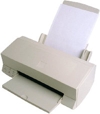The Appositive
Recognize an appositive when you see one.
An appositive is a noun or noun phrase that renames another noun right beside it. The appositive can be a short or long combination of words. Look at these examples:
The insect, a cockroach, is crawling across the kitchen table.
The insect, a large cockroach, is crawling across the kitchen table.
The insect, a large cockroach with hairy legs, is crawling across the kitchen table.
The insect, a large, hairy-legged cockroach that has spied my bowl of oatmeal, is crawling across the kitchen table.
Here are more examples:
During the dinner conversation, Clifford, the messiest eater at the table, spewed mashed potatoes like an erupting volcano.
My 286 computer, a modern-day dinosaur, chews floppy disks as noisily as my brother does peanut brittle.
Genette's bedroom desk, the biggest disaster area in the house, is a collection of overdue library books, dirty plates, computer components, old mail, cat hair, and empty potato chip bags.
Reliable, Diane's eleven-year-old beagle, chews holes in the living room carpeting as if he were still a puppy.
Punctuate the appositive correctly.
The important point to remember is that a nonessential appositive is always separated from the rest of the sentence with comma(s).
When the appositive begins the sentence, it looks like this:
A hot-tempered tennis player, Robbie charged the umpire and tried to crack the poor man's skull with a racket.
When the appositive interrupts the sentence, it looks like this:
Robbie, a hot-tempered tennis player, charged the umpire and tried to crack the poor man's skull with a racket.
And when the appositive ends the sentence, it looks like this:
Upset by the bad call, the crowd cheered Robbie, a hot-tempered tennis player who charged the umpire and tried to crack the poor man's skull with a racket.
